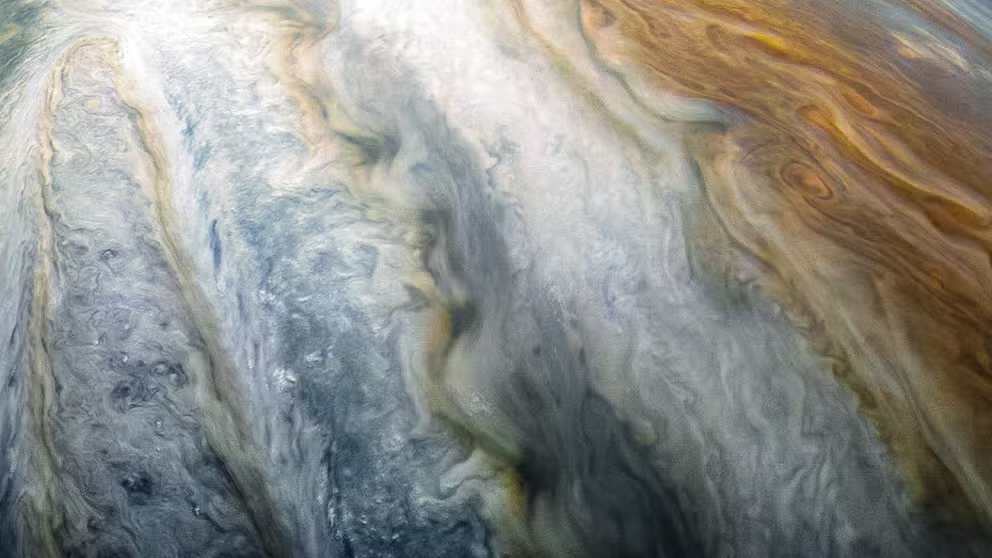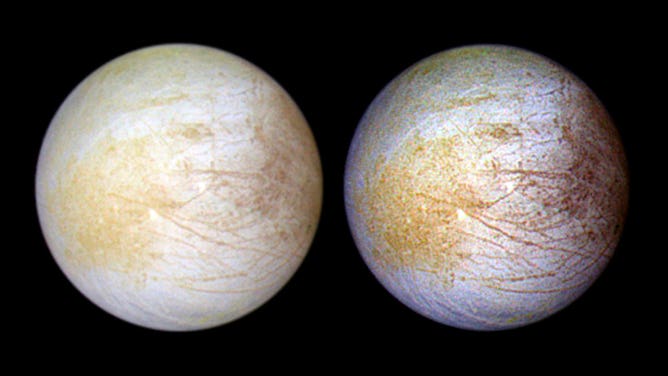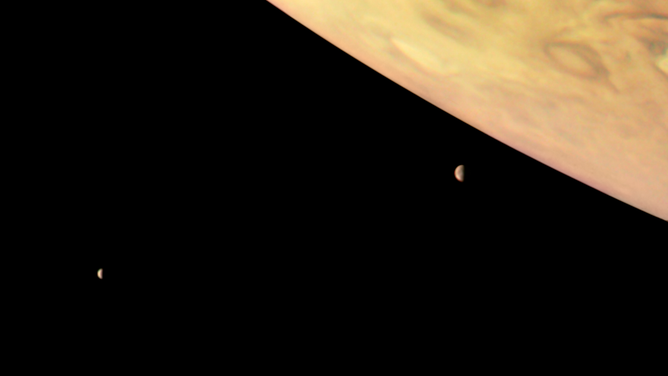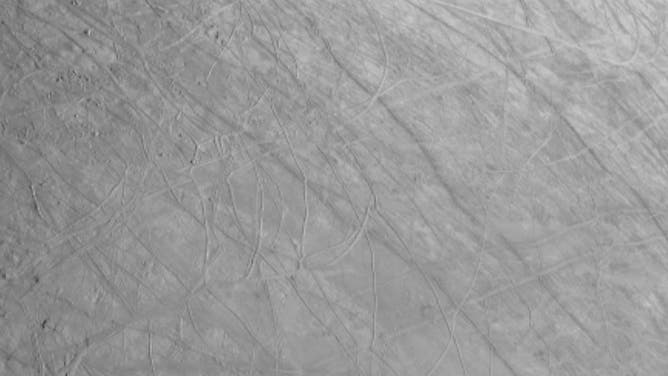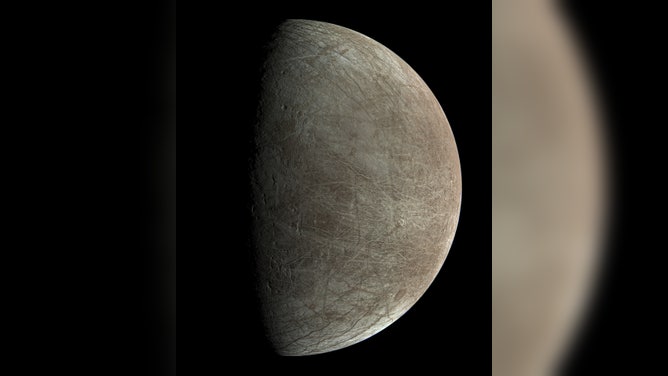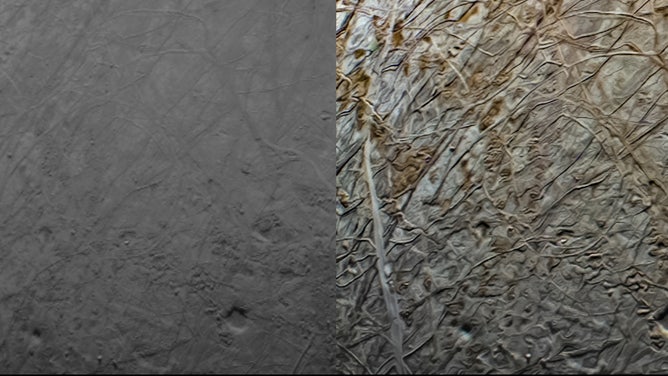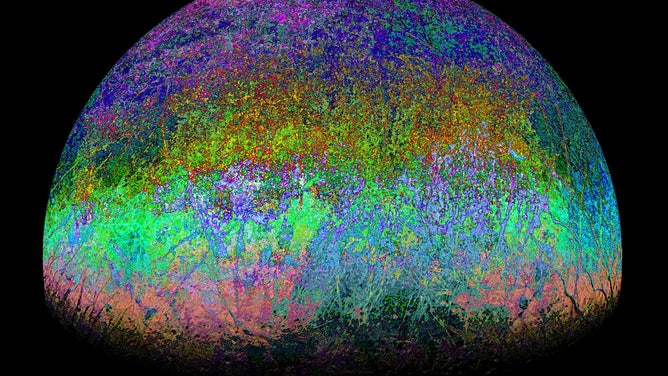Jupiter's moon Europa produces enough oxygen to keep a million humans breathing for a day
NASA's Europa Clipper spacecraft launching in 2024 will search for signs of potential habitability on the icy moon using a suite of science instruments, including looking for oxygen production.
See stunning photos of Jupiter taken by NASA's Juno orbiter
On July 4, 2016, the Juno spacecraft entered orbit around Jupiter. To celebrate its 50th orbit of the gas giant, NASA released 50 images taken by the spacecraft.
Europa is becoming more interesting ahead of NASA's robotic mission to Jupiter's fourth-largest moon beginning later this year.
Scientists with NASA's Juno mission currently orbiting Jupiter have determined that Europa is producing much more oxygen than some previous estimates. According to the study, published Monday in Nature Astronomy, the oxygen coming off the moon's surface is about 1,000 tons every 24 hours, enough to keep a million humans breathing for a day.
The findings were revealed thanks to data from Juno's Jovian Auroral Distributions Experiment (JADE) instrument. Juno's team flew the spacecraft by Europa on Sept. 29, 2022, to measure hydrogen and oxygen ions swept away by Jupiter's magnetic field.
Previous estimates of oxygen from Europa were anywhere from a few pounds to more than 2,000 pounds per second, but these new JADE measurements found Europa is producing 26 pounds every second, according to the study authors.
NASA’S WEBB TELESCOPE DETECTS CARBON DIOXIDE ON ONE OF JUPITER’S MOONS
Oxygen at Europa is interesting because scientists believe the world contains a global ocean below its icy crust and above a rocky mantle. Astrobiologists want to know if the salty ocean could contain life-supporting elements.
NASA said Europa could also be getting oxygen through another source as charged particles from Jupiter bombard the icy crust, splitting water molecules in two and generating oxygen.
JUPITER’S FORECAST: SWIRLING STORMS AS BIG AS EARTH THAT LAST FOR YEARS
"Europa is like an ice ball slowly losing its water in a flowing stream. Except, in this case, the stream is a fluid of ionized particles swept around Jupiter by its extraordinary magnetic field," said JADE scientist Jamey Szalay from Princeton University in New Jersey. "When these ionized particles impact Europa, they break up the water-ice molecule by molecule on the surface to produce hydrogen and oxygen. In a way, the entire ice shell is being continuously eroded by waves of charged particles washing up upon it."
Launching in October, NASA's Europa Clipper spacecraft will search for signs of potential habitability on the icy moon using a suite of science instruments, including looking for oxygen production.
The spacecraft is set to arrive in the Jovian system in 2030.
